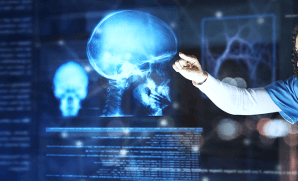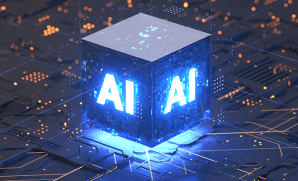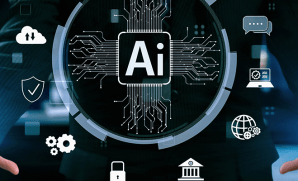Critical Legal & Ethical Considerations in the Use of Generative AI
Publish Date: November 22, 2024Today’s businesses are standing at the base of GenAI’s magnificent mountain, knowing that at its peak lies a treasure trove of gold. The summit promises immense rewards and the chance to transform fortunes. McKinsey’s estimates put GenAI’s potential for adding value at nearly $4.4 trillion to the global economy.[1].
However, this path to the summit is also fraught with peril—steep, narrow, and lined with treacherous cliffs and hidden pitfalls. For instance, while 63% of respondents in a McKinsey survey characterize GenAI implementations as ‘high’ or ‘very high,’ 93% are not ‘very prepared’ to do that responsibly. The leaders know that one misstep could lead to a disastrous fall, harming the whole organization.[2].
In the first blog of this series, we explored some of the critical impacts and projections of Generative AI or GenAI applications in sectors like healthcare, finance, legal, etc. We also reviewed some key challenges businesses are bound to encounter in piloting real-world applications of GenAI. While we briefly discussed the severe legal and ethical implications of using GenAI, the analysis deserves its “own” deep dive.
Legal and Ethical Risks in GenAI
Incorporating GenAI into any business will come with risks aplenty. While McKinsey has estimated the technology to generate up to USD 4.4 trillion in value, nearly two-thirds of leaders, as per BCG, are either ambivalent or unsatisfied with their progress with GenAI.[1]. Despite the rapid pace of change, GenAI’s use is still in its early days. As such, business leaders must confront the scale of the impact and changes GenAI will bring, including the two big ones—ethical and legal.
Ethical considerations
Like most human beings, the internet and humanity’s vast knowledge pool, the information we work with can be inaccurate.
Similar is the case with GenAI, as it can provide incorrect information to users (also known as ‘hallucination’) when asked to do tasks outside AI’s purview of functional limitations. Similarly, given Large Language Models or LLMs are trained on source materials available on the web (mostly without express permission from the intellectual property owner), this calls into question the copyrights of trademarked materials. For instance, GenAI systems trained on vast datasets may also contain certain societal biases that can be reflected in their responses. This means that if business leaders are expected to begin using GenAI models with the expectation that most of their employees will also use them, they must understand these limitations and establish a clear role to validate whatever output comes out of the models.
Furthermore, GenAI’s use also raises privacy concerns. Given that these systems require access to large amounts of sensitive data to be used in a business setting, their misuse and unauthorized sharing can also inadvertently expose the data to risk or theft. Therefore, It will be crucial to establish robust data protection measures and ensure transparency in collecting, storing, and using AI systems.
Legal considerations
As touched upon earlier, GenAI presents considerable challenges to existing IP laws. While traditional frameworks have been designed to protect works created by humans, they struggle to address the authorship and ownership of AI-generated outputs. This is especially pertinent in AI-generated content, where governments worldwide take online safety seriously to address harmful and illegal content. Similarly, the private sector ensures their research and development doesn’t infringe on existing IPs. For example, Microsoft outlined a comprehensive approach to combat the abuse of AI-generated content to protect people and communities, basing it on six focus areas.[1]:
- A solid architecture to ensure safety
- A durable media watermarking and provenance
- Safety of services from abusive content and conduct
- Robust collaboration across the industry, including governments and civil society
- Modern legislation to protect individuals from tech abuse
- Awareness and education for the masses at large on GenAI
Furthermore, the rapid evolution of generative AI has outpaced the development of comprehensive regulatory frameworks. While some jurisdictions have begun introducing AI-specific regulations, such as the European Union’s AI Act, many legal systems are still catching up. These regulations aim to ensure the ethical use of AI, promote transparency, and protect individuals’ rights. However, the effectiveness of these regulations in addressing the nuanced challenges of generative AI remains to be seen.
Balancing Innovation with Ethical and Legal Responsibilities
As we harness the potential of generative AI, balancing innovation with ethical and legal responsibilities is essential.
Developing and deploying AI technologies responsibly requires adherence to ethical frameworks and best practices that prioritize fairness, transparency, and accountability. Organizations should implement similar robust governance structures to oversee AI development and use, ensuring ethical considerations are embedded in every stage of the AI lifecycle. Continuous education and awareness programs can help stakeholders understand AI’s ethical and legal implications and promote responsible use.
Undeniably, the journey ahead is complex, but with thoughtful and proactive approaches, we can navigate the ethical and legal minefield of generative AI and build a future where technology serves humanity responsibly and equitably. In the next blog, we will explore GenAI’s applications and some success stories in the healthcare sector to understand how business leaders are doing so.
Stay tuned!







